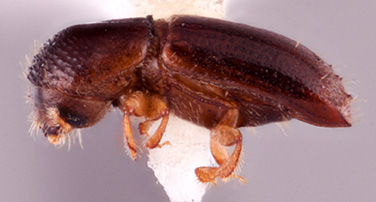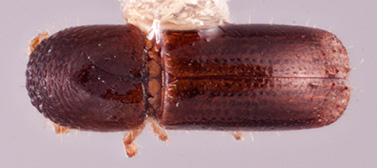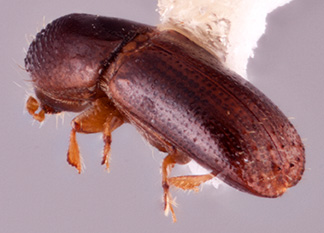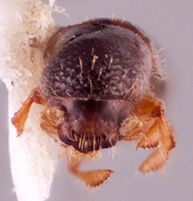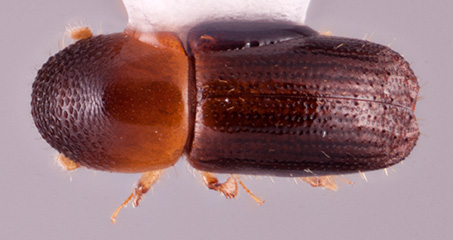Planiculus
|
Planiculus bicolor; R.K. Osborn |
|
Planiculus bicolor; R.K. Osborn |
|
Planiculus bicolor; R.K. Osborn |
|
Planiculus bicolor; R.K. Osborn |
|
Planiculus limatus; R.K. Osborn |
Taxonomy
Planiculus Hulcr and Cognato, 2010a: 21.
Diagnosis
Minute to small (1.70−2.40 mm long), elongate (2.57−3.6 times as long as wide) and distinctly bicolored species. Planiculus can be distinguished by the elytralelytral:
pertaining to the elytra
declivitydeclivity:
downward slope of either the pronotum or elytra
 flat, slightly broadened laterally; declivital interstriaeinterstria:
flat, slightly broadened laterally; declivital interstriaeinterstria:
longitudinal spaces along the elytra between the striae, which is not as<br />
impressed and bear smaller punctures.
 1 laterally broadened; laterallateral:
1 laterally broadened; laterallateral:
pertaining to the side
 profile of declivitydeclivity:
profile of declivitydeclivity:
downward slope of either the pronotum or elytra
 gradually descending; pronotum from dorsaldorsal:
gradually descending; pronotum from dorsaldorsal:
of or relating to the upper surface; opposite of ventral
 view long, rounded anteriad (type 9), from laterallateral:
view long, rounded anteriad (type 9), from laterallateral:
pertaining to the side
 view elongated with low summitsummit:
view elongated with low summitsummit:
highest point, used for pronotum and elytra, denotes the peak between pronotal frontal slope and disc, and between elytral disc and declivity and elongate discdisc:
and elongate discdisc:
the flat central upper surface of any body part (e.g. pronotum and elytra) (type 8); antennal clubclub:
(type 8); antennal clubclub:
the broadened, flattened end of antenna, in Xyleborini comprised of three segments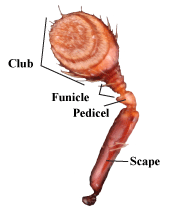 approximately circular, obliquely truncateobliquely truncate:
approximately circular, obliquely truncateobliquely truncate:
nearly truncate but rounded not flat in lateral view
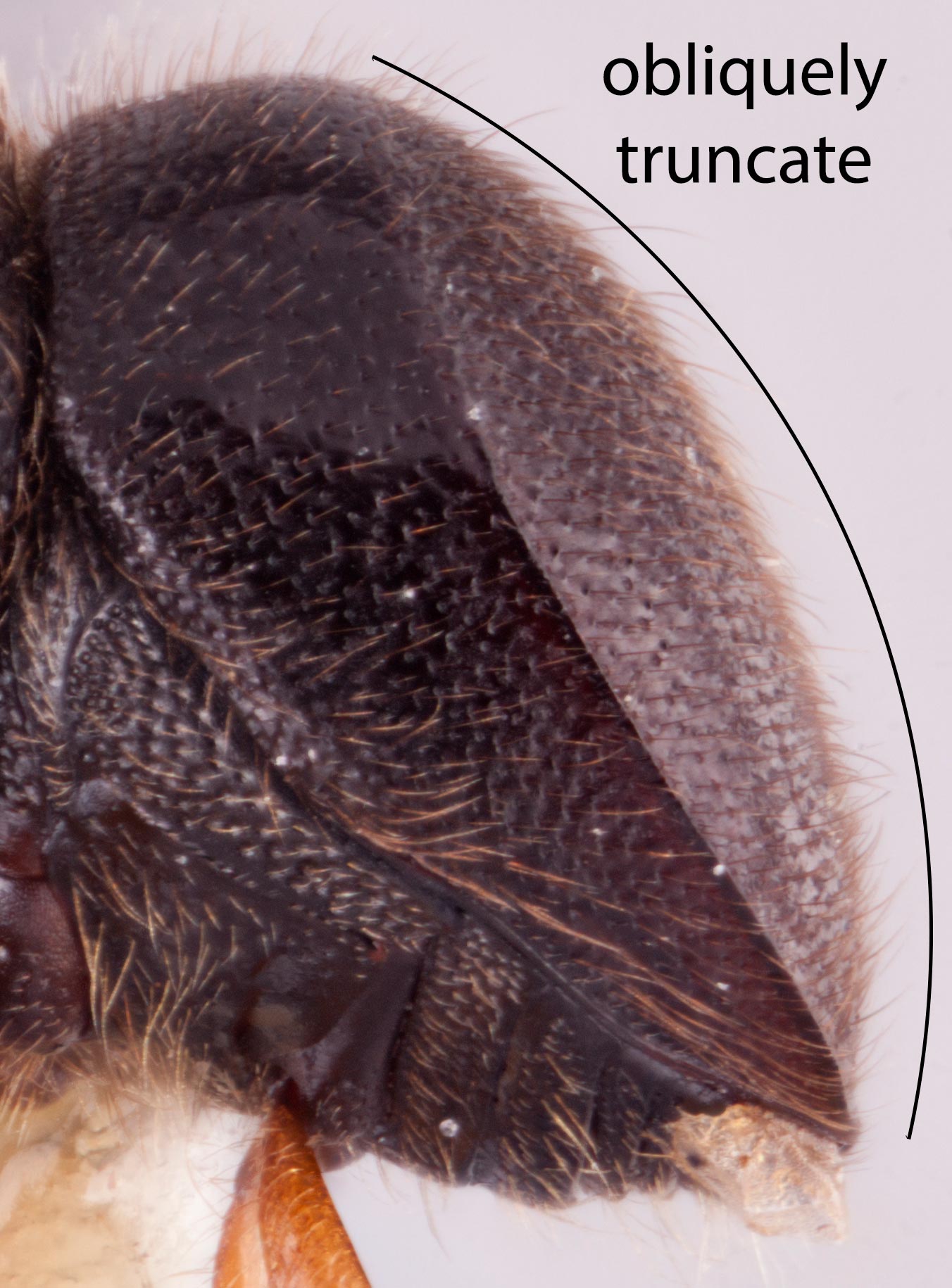 (type 2), segment 1 corneouscorneous:
(type 2), segment 1 corneouscorneous:
horn-like; applied to antennal club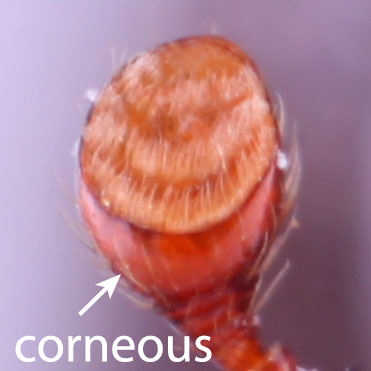 , large, occupying at least basalbase:
, large, occupying at least basalbase:
point or edge closest to the body; opposite of apex half of clubclub:
half of clubclub:
the broadened, flattened end of antenna, in Xyleborini comprised of three segments , segment 2 visible on posteriorposterior:
, segment 2 visible on posteriorposterior:
toward the rear end; opposite of anterior
 face, and protibiaprotibia:
face, and protibiaprotibia:
tibia of the first pair of legs
distinctly triangular. In addition, the procoxae are contiguous; scutellum visible, flat, flush with elytra; and mycangial tufts absent.
Species are most easily confusedconfused:
of markings, having indefinite outlines or running together as lines or spots without definite pattern; usually referring to punctures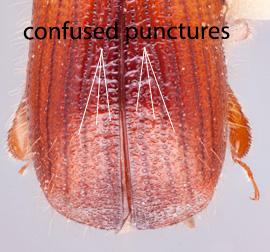 with small Euwallacea and Xyleborus species but can be distinguished by the elytralelytral:
with small Euwallacea and Xyleborus species but can be distinguished by the elytralelytral:
pertaining to the elytra
declivitydeclivity:
downward slope of either the pronotum or elytra
 flat, slightly broadened laterally, with very few tuberclestubercle:
flat, slightly broadened laterally, with very few tuberclestubercle:
a small knob-like or rounded protuberance of the exoskeleton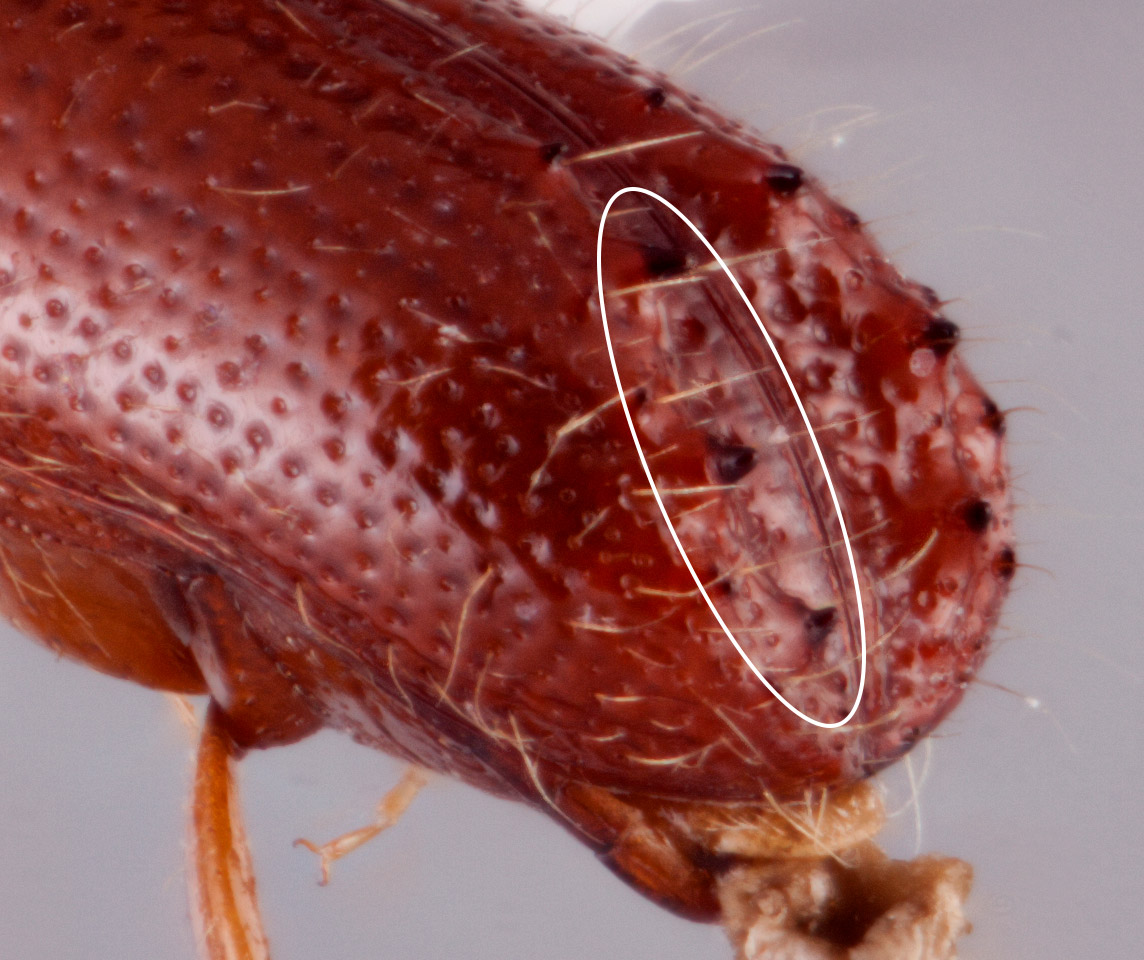 and smaller more elongate body, rounded frontalfrontal:
and smaller more elongate body, rounded frontalfrontal:
pertaining to the frons
margin of pronotumpronotum:
the dorsal surface of the thorax
(type 7) that is never subquadratesubquadrate:
almost quadrate, with oblique corners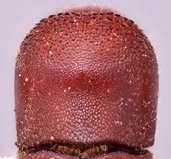 as in Euwallacea.
as in Euwallacea.
May be confused with
Euwallacea and Xyleborus
Distribution
throughout the Paleotropics and Australasia
Gallery system
The gallery system has a few branches more or less in one transverse plane with several small brood chambers extending longitudinally. Surface galleries between the phloem and sapwood may occur in thick-barked stems (Browne 1961bBrowne 1961b:
Browne FG. 1961b. The biology of Malayan Scolytidae and Platypodidae. Malayan Forest Records 22: 1-255.).

